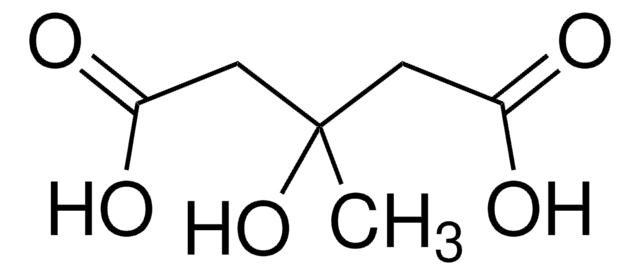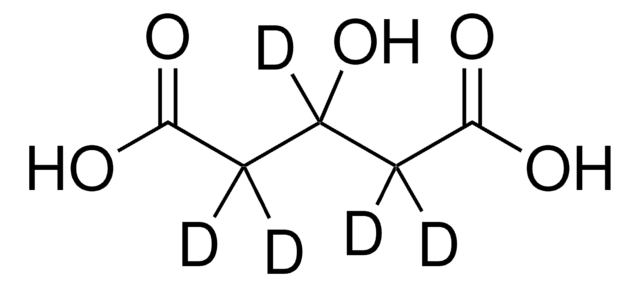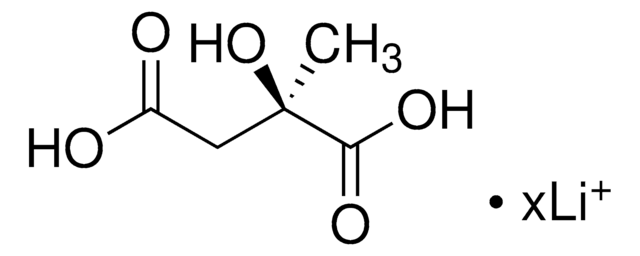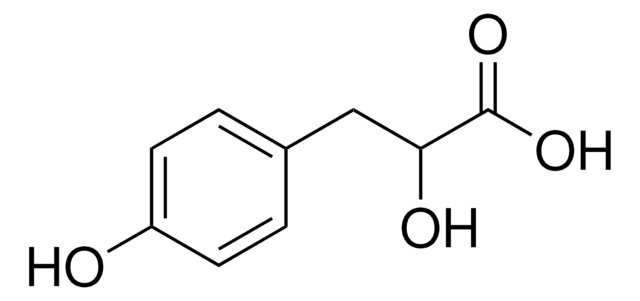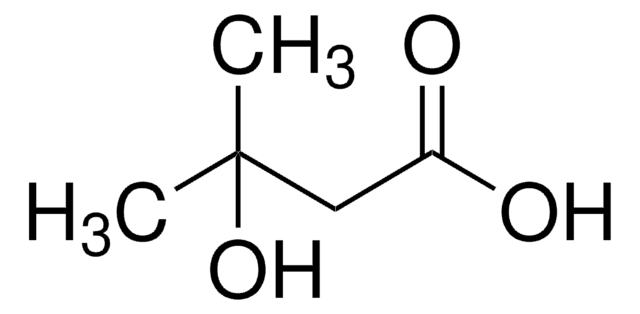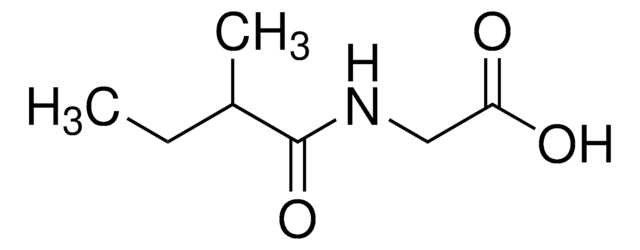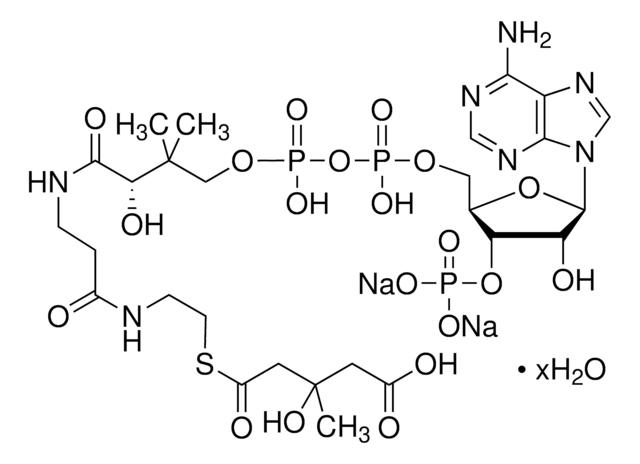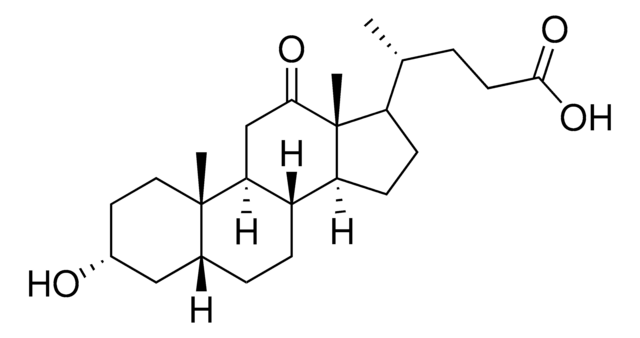44108
(E)-3-Methylglutaconic acid
≥97.0% (HPLC)
Sinónimos:
(2E)-3-Methyl-2-pentenedioic acid
Iniciar sesiónpara Ver la Fijación de precios por contrato y de la organización
About This Item
Fórmula empírica (notación de Hill):
C6H8O4
Número de CAS:
Peso molecular:
144.13
Beilstein/REAXYS Number:
1722909
MDL number:
UNSPSC Code:
41116107
PubChem Substance ID:
NACRES:
NA.24
Productos recomendados
Quality Level
assay
≥97.0% (HPLC)
mp
137-143 °C
application(s)
clinical testing
format
neat
storage temp.
2-8°C
InChI
1S/C6H8O4/c1-4(2-5(7)8)3-6(9)10/h2H,3H2,1H3,(H,7,8)(H,9,10)/b4-2+
InChI key
WKRBKYFIJPGYQC-DUXPYHPUSA-N
Biochem/physiol Actions
3-Methylglutaconic aciduria (MGCA) is a group of metabolic disorders characterized by increased urinary excretion of 3-methylglutaconic acid and 3-methylglutaric acid. Five distinct forms of MGCA have been recognized. MGCA type 1 is caused by primary deficiency of the mitochondrial enzyme 3-methylglutaconyl-CoA hydratase (3-MGCH), resulting in a block of leucine degradation. In all other types, the activities of 3-MGCH and other enzymes of leucine degradation are normal and the MGCA is thought to be secondary to a defect in another pathway. MGCA type 2, also known as Barth syndrome, is an X-linked cardiomyopathy associated with skeletal myopathy, neutropenia, and growth retardation. MGCA type 3, also referred to as Costeff optic atrophy syndrome, is an autosomal recessive disorder caused by mutations in the gene OPA3. It is characterized by early-onset bilateral optic atrophy, later-onset extrapyramidal dysfunction. MGCA type 5 caused by mutation in the DNAJC19 gene, is characterized by early-onset dilated cardiomyopathy with conduction defects, nonprogressive cerebellar ataxia, testicular dysgenesis, and growth failure. MGCA type 4 is the unclassified type, which includes all other patients with MGCA.
signalword
Warning
hcodes
Hazard Classifications
Eye Irrit. 2 - Skin Irrit. 2
Storage Class
11 - Combustible Solids
wgk_germany
WGK 3
flash_point_f
Not applicable
flash_point_c
Not applicable
Elija entre una de las versiones más recientes:
Certificados de análisis (COA)
Lot/Batch Number
¿No ve la versión correcta?
Si necesita una versión concreta, puede buscar un certificado específico por el número de lote.
¿Ya tiene este producto?
Encuentre la documentación para los productos que ha comprado recientemente en la Biblioteca de documentos.
Solution of a classical problem. Tautomerism and isomerism in the α-methylglutaconic acid series
Kagan, J., et al.
The Journal of Organic Chemistry, 40, 3085-3093 (1975)
Metabolic profiling of urinary organic acids by single and multicolumn capillary gas chromatography.
M F Lefevere et al.
Journal of chromatographic science, 27(1), 23-29 (1989-01-01)
High-resolution gas chromatography (HRGC) and gas chromatography/mass spectrometry (GC/MS) are the techniques of choice to determine the retention indices of more than 200 organic acids as their trimethylsilyl (TMS) or oxime-trimethylsilyl derivatives. Several types of apolar and semipolar fused-silica capillary
M Fontaine et al.
Clinica chimica acta; international journal of clinical chemistry, 255(1), 67-83 (1996-11-15)
We report clinical and biological investigations in two patients (twin brothers) with 2-methylacetoacetyl-CoA thiolase deficiency. Main clinical features included important staturo-ponderal delay, frequent infectious rhinopharyngitis episodes and an acute metabolic acidosis at the age of 4 years, this metabolic decompensation
M Duran et al.
Biomedical mass spectrometry, 9(1), 1-5 (1982-01-01)
The identification of (E)-2-methylglutaconic acid, a 'new' metabolite of isoleucine, is described. The substance was detected in urine samples from patients with propionic acidaemia, methylmalonic acidaemia and so-called beta-ketothiolase deficiency; in the majority of cases together with N-tiglylglycine. (E)-2-Methylglutaconic acid
Nuestro equipo de científicos tiene experiencia en todas las áreas de investigación: Ciencias de la vida, Ciencia de los materiales, Síntesis química, Cromatografía, Analítica y muchas otras.
Póngase en contacto con el Servicio técnico